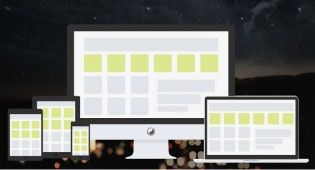6 Tremendous Twitter Tips

YNOT EUROPE – If you’re not at least aware of Twitter, you should be. The cyber-tool of the moment, Twitter is a micro-blogging service that offers all sorts of potential to marketers who know how to use it to their advantage.
Woe betide those who don’t, though. For all its latent power, Twitter can be an enormous time-waster at best and a reputation killer at worst. Here are six things to keep in mind as you consider the best ways to incorporate tweets into your marketing plan.
1. Start small.
There isn’t always strength in numbers. Following every single account that follows you may lead to more trouble than benefit. A significant number of twitter accounts belong to spammers, and their messages are worthless — and may be dangerous, if they include obscured URLs that lead to sites harboring drive-by malware. Twitter reputations are made and broken by aspects as seemingly innocuous as the quality of your upstream (people you follow) and downstream (people who follow you).
Although a certain amount of bragging rights still vests in having a large collection of followers, experts encourage Twitter users to start slow and build gradually. How? Follow recognized authorities, people you know personally and other users whose interests are similar to yours. Follow people you want to follow you, post tweets with legitimate value, and with luck some of the twitter “kingmakers” will follow you back and retweet some of your posts. Get retweeted often enough, and people will start to notice. Before you realize it, your downstream will blossom.
2. Power-up your searches.
One of the most powerful, yet relatively undiscovered, Twitter resources is Search.Twitter.com, a utility that allows users to track what others are discussing in real-time. If you know what people are talking about, you can insert your message where it’s most appropriate.
In addition, advanced options allow users to search for question marks or specify keywords by geographic location. Providing helpful answers to immediate questions is a great way to increase goodwill, and consequently, followers.
Twitter also offers RSS feeds based on keywords. After searching, click “RSS feed for this query” near the bottom of the results page.
3. Watch hashtags.
Hashtags are denoted by “#[subject]” at the beginning of a tweet. The markers facilitate subject searches and allow Twitter users more easily to track conversations in which they are particularly interested. Consider making a list of hashtags that are of significance to your market, then check Hashtags.org to see how those subjects are trending on Twitter at any given time.
Whatever other hashtags you monitor, consider keeping an eye on #ff, one of the most popular. The abbreviation stands for “Follow Friday,” a tradition in which every Friday, Twitter users around the globe list other users they recommend following. How do you get on someone’s list? Hold back some of your most intriguing tweets for Friday morning. Being top-of-mind on Fridays not only may up your tweet quotient, but could land you a coveted spot among the #ff glitterati.
4. Keep an eye on the clock.
Twitter is an in-the-moment medium. The majority of Twitter users ignore tweets that are older than an hour or two, so to get the most from your messages, make sure you deliver them when your market is most likely to be paying attention.
According to Author Marketing Experts Chief Executive Officer Penny Sansevieri, those with global businesses are most likely to benefit from tweets posted between 1300 and 2200 GMT. Retweeting begins to drop off toward the end of the day, she noted, and anything tweeted between 0100 and 0500 GMT may be wasted.
To gauge the time that generates the most benefit within your market, try tweeting special offers or contests at different hours and see what times produce the most responses. If those times turn out to be in the middle of your night or at some other inconvenient moment, use an application like TweetDeck or HootSuite to schedule your tweets so they post while you’re away from your keyboard.
5. Shorter is better.
Everyone knows a tweet is limited to 140 characters, right?
Wrong.
While technically correct, thinking in terms of a 140-character limit while crafting a tweet could leave you suffering “tweetus interruptus” if someone decides to pass along your immortal words. Remember: One of the primary goals of tweeting is to see your messages “go viral” — in other words, you want others to retweet what you’ve posted. When retweeting, it’s good manners to credit the original poster by placing a tag in front of the retweeted message, like so: rt [twitter handle] [message]. If the original message runs the full 140 characters, in the retweet it will be truncated at the end. That’s particularly gruesome news if the message ends in a link (and many do).
To prevent loss of important data, most experts recommend keeping your tweets to 120 characters or fewer, in order to leave room for one or two rt-strings in front. A short Twitter handle is beneficial here, too.
6. Make your message matter.
Regardless when or how often you tweet, how many followers you have, or whether or not you’re ever retweeted or mentioned among the #ff crowd, no one will care what you’re saying in the Twitter stream unless you give them something of value to them. Announcing new products or firing away with a relentless list of marketing messages that suit your agenda but don’t give readers any reason to care only will get you listed as a waste of time at best and a spammer at worst.
The best advice is simple: Engage the community. Be part of the discussion, not a god on some marketing pedestal spouting directives to the masses or stroking your own ego. Give Twitter users a reason to care about you and your messages by providing them something of value, and they’ll respond in kind by giving you the positive attention you crave.

Comments are closed.





